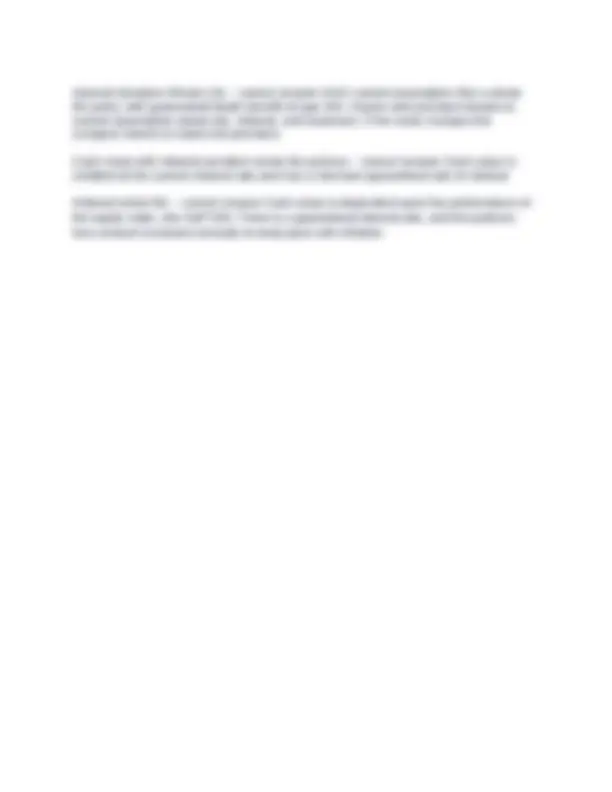



Study with the several resources on Docsity

Earn points by helping other students or get them with a premium plan


Prepare for your exams
Study with the several resources on Docsity

Earn points to download
Earn points by helping other students or get them with a premium plan
Community
Ask the community for help and clear up your study doubts
Discover the best universities in your country according to Docsity users
Free resources
Download our free guides on studying techniques, anxiety management strategies, and thesis advice from Docsity tutors
Primerica Chapter 3 Life insurance policies correctly answered 2023.
Typology: Exams
1 / 3

This page cannot be seen from the preview
Don't miss anything!


Attained Age - correct answer Insured's age at the time the policy is issued or renewed. Deferred - correct answer Witheld or postponed until a specific time or event in the future. Endow - correct answer to have cash value of a whole life policy reach the contractural face amount. Face Amount - correct answer The amount of benefit stated in the LIP. Fixed Life Insurance Products - correct answer contracts that offer guaranteed minimum or fixed benefits Lapse - correct answer policy termination due to nonpayment of premium Nonforfeiture values - correct answer Benefits in a life insurance policy that the policyowner cannot lose even if the policy is surrendered or lapses. Variable Life insurance products - correct answer Contracts in which cash values accumulate base upon a specific portfolio of stocks no guarantee of performance. Term Life Insurance (aka pure life insurance) - correct answer Temporary protection, offered in groups of years. Greatest protection for the lowest cost. There are three different types of term insurance, based on how the death benefit changes during the policy term, what are they? - correct answer Level term, increasing term, and decreasing term Does the premium change in a term policy? - correct answer No, the premium is figured at the attained age upon selling, renewing, or converting the term policy. Level Term Insurance - correct answer Provides a level death benefit and a level premium during the policy term. (renews based on attained age) Annually Renewable Term - correct answer Purest form of term. Death benefit remains level and the policy renews annually without proof of insurability. The premium also increases annually according to attained age. Decreasing Term Insurance - correct answer Feature a level premium and a death benefit which decreases every year over the duration of the policy term.
When is decreasing term used? - correct answer Usually to insure the payment of a mortgage, or other debts. Increasing term - correct answer features level premiums and a death benefit that increases each year over the duration of the policy term. They adjust for inflation and provide greater survivor protection. When is increasing term used? - correct answer Usually by insurance companies to fund riders that provide a refund of premium, or gradual increase in total coverage. Whole Life Insurance - correct answer Provides lifetime protection and includes a savings element (or cash value). Whole life policies endow at the insured's age 100. Whole life and death benefits premiums, liquidity, and cash value info. - correct answer Level Premium, Level death benefit for life, Cash value paid out to policyowner. Whole live has a liquidity feature, but all unpaid loans against cv are subtracted from the death benefit if the insured dies. What happens to cash value if a whole life policy is surrendered? - correct answer Its going to the policyowner. When does cash value begin accumulation? - correct answer 3rd policy year. Cash value grows tax _____ - correct answer Deferred. Basic Whole Life insurance Types - correct answer Straight whole life, Limited Pay whole Life, Single Premium Whole life Straight Whole Life - correct answer Basic whole life policy. Level premiums and increasing cash value. Straight life has the lowest annual premium of whole life policies. Limited Payment whole life - correct answer Designed so the premium is paid up well before 100 years old. Has a shorter paying period than straight life, so annual premiums will be higher. Single Premium Whole Life - correct answer Designed to provide a level death benefit to the insured's age 100 for a one time lump sum payment. Policy is paid up after one premium and generates immediate cash. Modified Life - correct answer Type of whole life that charges a lower premium (similar to term rates) for the first 3 to 5 policy years, then higher level premiums for the rest of the insured's life. Graded Premium - correct answer Similar to modified whole life in that the premiums start relatively low ant then level off at a point in the future. Starts cheaper than straight life, and increases for 5 to 10 years and remains level thereafter.